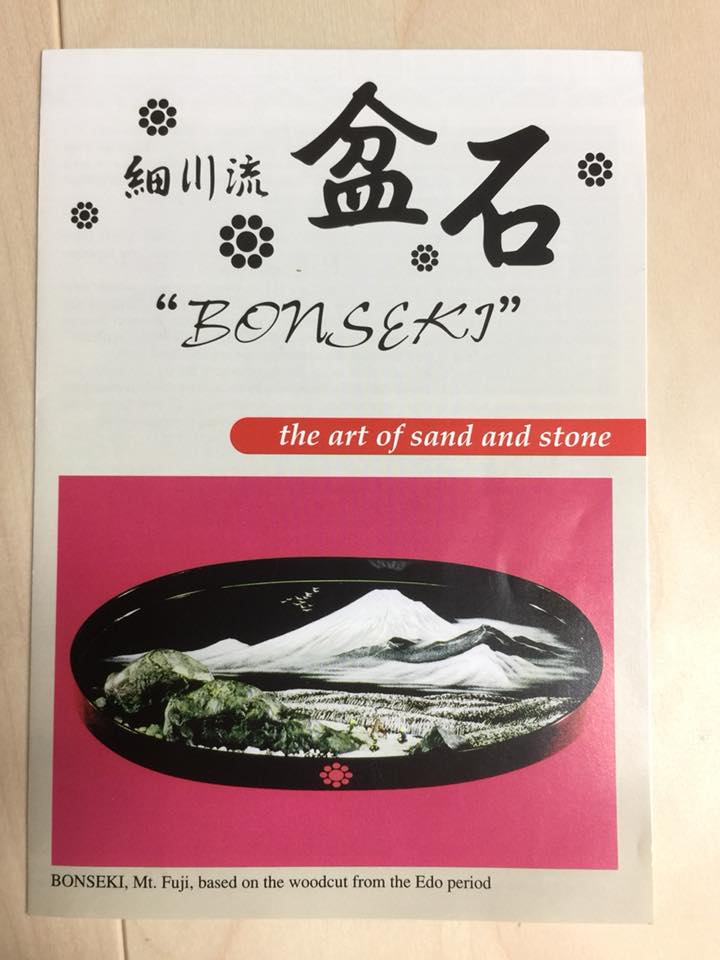
Ephemeral images
Ephemeral drawings in India
I am fascinated by ephemeral images and their attraction lies in their duality namely fragility of the materials and power of impermanence defying any desire of appropriation. The reasons to prefer a temporary image to other supports of worship are never explicit but the exciting feeling associated with it is never denied. While I do not wish to make a comparative study of ephemeral paintings or decorations belonging to several world traditions, I am eager to present various visual landscapes and find out their common features like:
- Creating on the earth or any floor.
- Using powdered minerals, coloured sawdust, vegetables, cereals, ashes, pulses, flowers and leaves.
- Drawing with the fingers, the palm or the back of the hand.
- Marking by sculpting, scraping or printing the powdered colours.
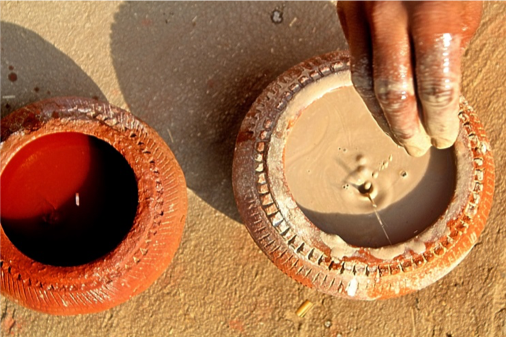
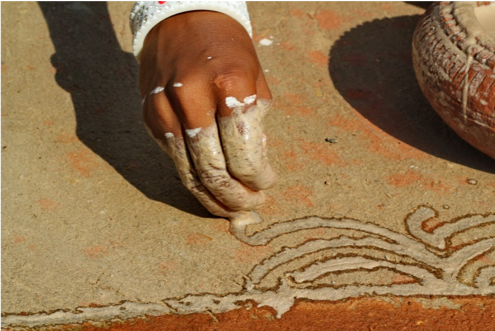

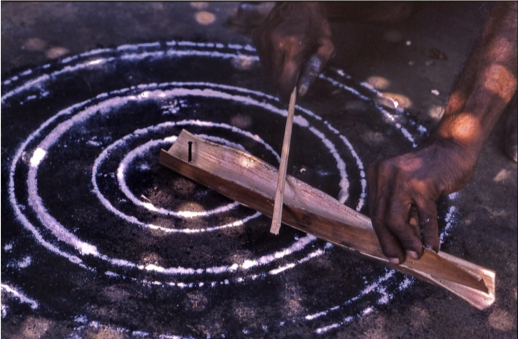
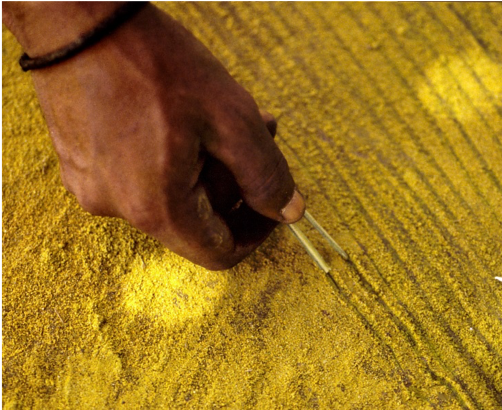
Indian floor paintings and votive decorations
In India, writing or drawing on the ground with rice flour or vegetable and mineral colours is called kolam in Tamil-Nadu and kalam in Kerala, muggu in Karnataka and Andhra-Pradesh, rangoli in Gujarat and Maharastra, alpona in Bengal, aripana in Bihar and Uttar-Pradesh, chok in Madhya Pradesh, mandana in Rajasthan, likhnu or lipana in Himachal Pradesh. The multiplicity of names suggests a living visual culture, creative, attentive to the surrounding world and rich in iconography. These distinctive regional names vibrate with colours and rhythms, and their syllables write in images, ancient myths and the codes of modern Indian society.
Christian votive decorations in Europe and in Guatemala
Fête-dieu, Corpus Christi or Fronleichnam, are names given to the Blessed Sacrament in European countries. It focuses on processions and decorated altars in front of the house entrance. The procession path is adorned with flowers, ferns, aromatic herbs, and foliage. Although this festival has disappeared in many European countries, some cities or villages are known for the magnificence of their paths particularly in Germany, in Italy, in Spain, in Portugal and in certain areas of France (Brittany, Alsace, pays Basque). In Guatemala, during the days leading up to Easter amazing carpets composed of flowers, vegetables, fruits and dyed sawdust adorn the streets of Antigua.
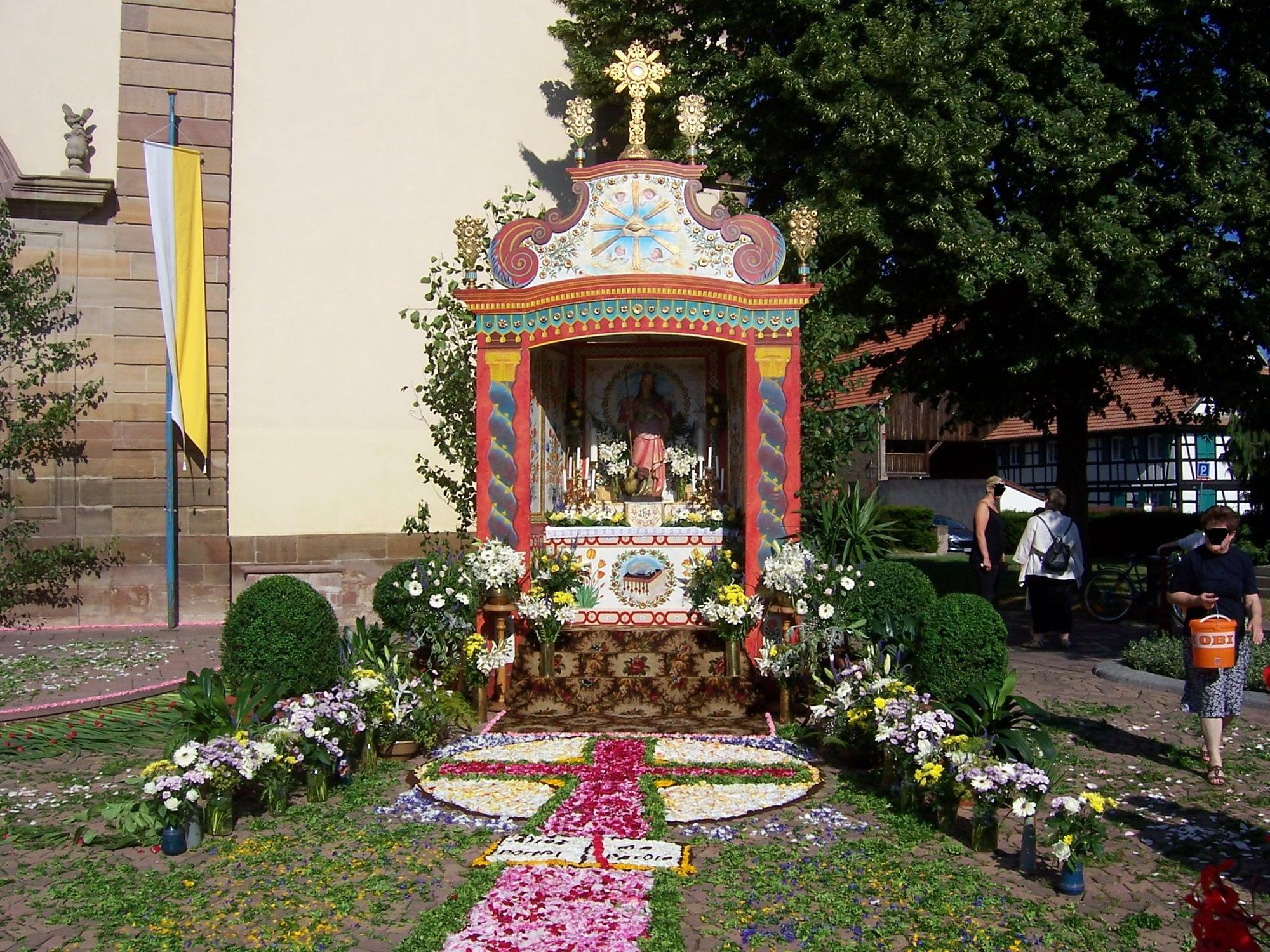
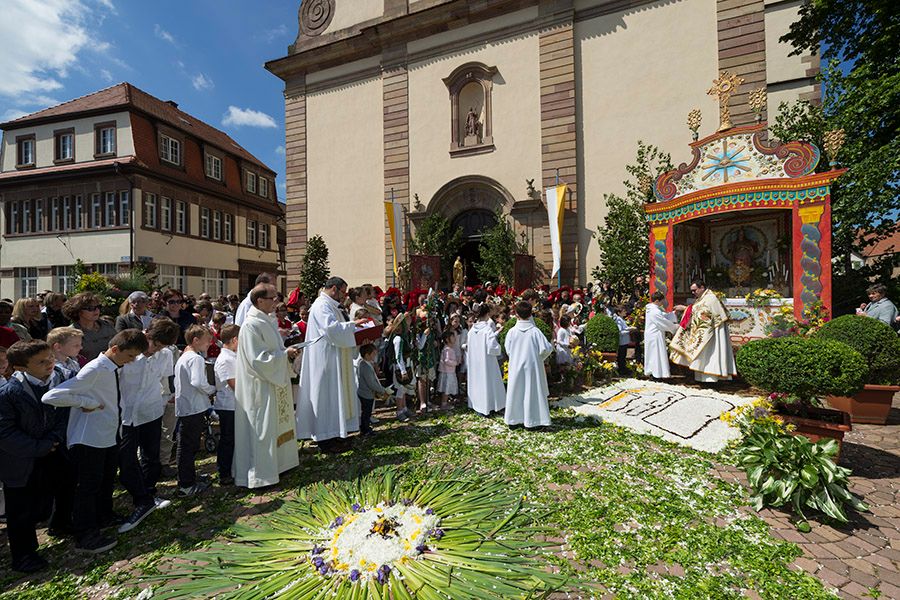
Tibetan sand-paintings
Sand paintings are a Tibetan Buddhist tradition involving the creation and destruction of mandala made from coloured sand. The laying is done by pouring the sand from traditional metal funnels called chakpur. The vibration causes the sands to flow.
A sand mandala is ritualistically dismantled once it has been completed and its accompanying ceremonies and viewing are finished to symbolize the Buddhist belief in the transitory nature of material life.

Haitian Veve
Haitian religious practices commonly include appealing to the loa or spirits, and inviting them to temporarily take possession of human bodies so that they may communicate directly with the believers. Veve are religious symbols commonly used in voodoo rituals throughout the African diaspora. They are usually drawn on the floor by strewing cornmeal or wood ash powder.

Navajos sand-paintings
In the sand painting of the Native Americans Navajo, the Medicine Man paints on the ground of a hogan, where the ceremony takes place, by letting the coloured sands flow through his fingers. The paintings are viewed as spiritual, living beings to be treated with great respect. The paintings are for healing purposes only. While creating the painting, the medicine man will chant, asking the deity to come into the painting and help heal the patient.

- Gladys A. Reichard, Navajo Medecine man Sandpainting, Dover publications, New-York 1977, first published By J.J.Augustin Publisher, 1939.
Australian aboriginal sand-drawings
Indigenous Australian art has a history which covers more than 30,000 years, and a wide range of native traditions and styles. The wide variety of media includes sand-paintings created for significant ceremonies. It was and still is, used to mark territory, record history, and tell stories about "The Dreaming". The designs can be a series of round circles, wavy lines, mounds or any of the many symbols that represent their Dreamtime journey and the land that it represents.

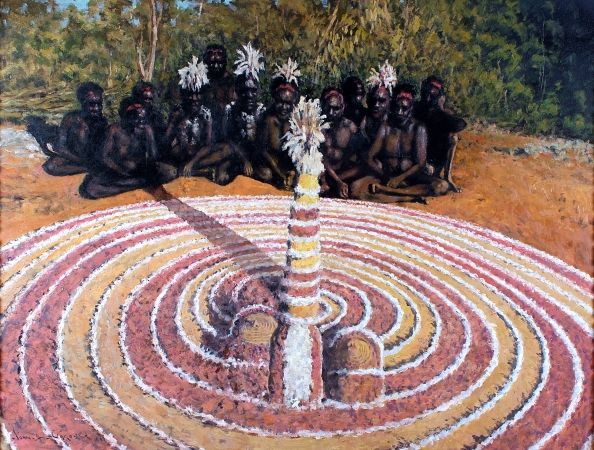
- Christine Watson, Re-embodying sand drawing and re-evaluating the status of the camp: The practice and iconography of women’s public sand drawing in Balgo,W.A, The Australian Journal of Anthropology, 1997, vol. 8, n°1 pages 104-124.
- Ian Keen, Aboriginal sand sculptures, Canberra University, 1977.
Sand-drawings in Vanuatu
Drawing in sand is a major tradition of Oceanic art practiced, in particular, in Vanuatu (formerly New Hebrides), in the South Pacific. Sand drawing have been used as mnemonic devices to record and transmit rituals, mythological lore and a wealth of oral information about local histories, cosmologies, and songs. It is officially recognised by UNESCO.
Bonseki or Japanese tray Images
